It’s not about the camera. It’s how you use it. Waiting for the right light, shooting only memorable scenes, avoiding shutter-induced blur, cropping and editing the best images you bring home.
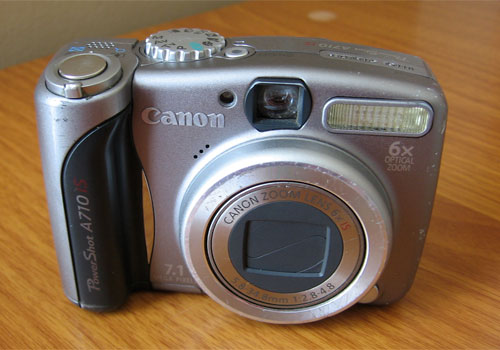
A lot of people assume I use a fancy gazillion-dollar digital camera for the pictures I post on Two-Heel Drive. Actually, I use an economical (indeed obsolete) Canon A710 IS that has been dropped, kicked and scraped across half of the Bay Area and North Carolina. I paid maybe $300 for the first one I owned. When I busted it during a hike at Big Basin Redwoods State Park, John Fedak donated his old A710 IS to the cause. Three years and over 6,000 frames later, it’s still snapping away like a camera with nine lives.
I get a few great pictures with this camera and a dozen or so pretty-good ones every time I go out. You don’t see the 100-plus poorly lit, badly framed and otherwise insipid pictures I take ever week. Be glad.
Without further ado, here my keys to getting good pictures with a cheap digital camera.
1) Shoot in the best light
 Most of us hike in the middle of the afternoon because it takes that long to get somewhere worth taking pictures of. Alas, this is the worst time of day to take pictures, especially when the sun’s out. Here’s why:
Most of us hike in the middle of the afternoon because it takes that long to get somewhere worth taking pictures of. Alas, this is the worst time of day to take pictures, especially when the sun’s out. Here’s why:
Visualize aiming your camera at the ground at a 90-degree angle. Then visualize what would happen if you could fire a ball-bearing out of the lens at extreme velocity. It would bounce right back up and smash your lens. Now visualize what would happen if you fired from a 45-degree angle. The ball bearing would bounce away harmlessly.
When you’re shooting at lunchtime under clear skies, rays of the sun hit everything earthly at that 90-degree angle, which does a ball-bearing dance on the sensors of your digital camera. Even if your images aren’t ruined by glare or overexposure, they’re flat and boring. In the early morning and late afternoon, the sun hits everything at a more favorable angle.
The best times of day are sunrise and dusk, when sunlight passes through the light orange haze caused by dust, grime and other consequences of human habitation. In the High Country they call it alpen glow (for fun, start watching movies for evidence of location shots taken during this “magic hour.” The long shadows and brownish cast are the giveaway. It’s astounding how often they shoot at this time day.)
Hardcore nature photographers are obliged to camp out so they’ll be closest to the best locales when the light is perfect.
2) Shoot only memorable scenes
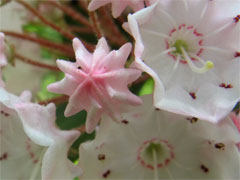 This is easier than you think: if you’ve never seen it before, it’s probably memorable. Last Sunday I saw more mountain laurels than I could have ever hoped for, but this was the first time I noticed the mountain laurel’s bud, which is remarkably geometric and visually interesting. I also noticed that the prettier buds were pink.
This is easier than you think: if you’ve never seen it before, it’s probably memorable. Last Sunday I saw more mountain laurels than I could have ever hoped for, but this was the first time I noticed the mountain laurel’s bud, which is remarkably geometric and visually interesting. I also noticed that the prettier buds were pink.
If you filter out all the stuff you’ve seen before, you practically guarantee bringing home more novel images. Corollary: shoot something familiar from a bunch of unfamiliar angles. Sometimes the results are wacky, but sometimes they’re way cool.
Also remember the “rule of thirds,” which decrees that you don’t want the object of your picture centered in the image; you want it off to the side. Horizons belong in the lower third or upper third — not across the middle (this was the ironclad law of John Ford, the legendary filmmaker).
3) Avoid shutter-induced blur
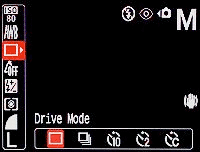 When you snap a shot, it bumps the camera a bit. This doesn’t hurt anything in bright light: your camera’s automatic shutter adjustment will snap the picture so quickly that little blur will show up.
When you snap a shot, it bumps the camera a bit. This doesn’t hurt anything in bright light: your camera’s automatic shutter adjustment will snap the picture so quickly that little blur will show up.
However, if you’re shooting under tree cover in low light, your cam slows the shutter speed down a point where the act of clicking blurs the image. Here’s what I do: use the camera’s shutter-release timer. I set it to go off two seconds after I click. When the shutter snaps, I’m holding the camera much more still than I would if I were snapping the picture when the shutter clicks.
This is the key to getting “macro” closeup shots. Most cheap cameras have a “macro” mode that focuses in extreme closeup, but you really need a tripod to get the sharpest images. The shutter-release timer, however, is the next best thing.
4) Editing and cropping
Editing simply means choosing the best, forgetting the rest. Professional photographers typically shoot a thousand frames or more for every image that gets published. The web removes these constraints, but it also generates a lot of snoozer travelogues and slideshows because shutterbugs just dump everything into them. Take your 25 favorite images and slash them to a 12-picture set. I guarantee it’ll tell a more powerful story.
Speaking of slashing: Cropping can make your poopy image pop. You have to be careful not to crop too much out, but if you do it right you can overcome any of the rule-of-thirds issues you might’ve neglected when shooting the original.
Compare this uncropped picture:
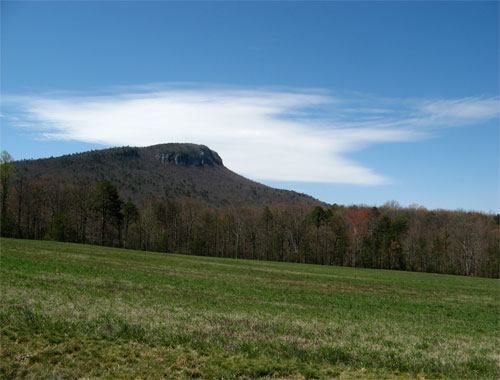
To the cropped image I posted:
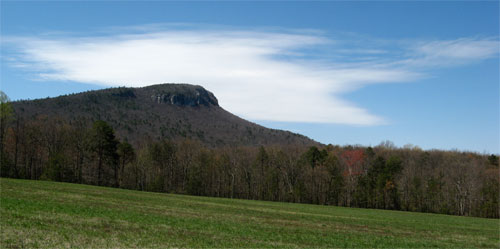
The first shot is kinda blah, while the second seems have a motion vibe because lots of extraneous sky and foreground have been cut out. Landscape shots almost always need a crop because there’s always more sky and dirt than you really need to frame an image.
Bear in mind: Just as you don’t want your subject centered, you almost never want your picture to be square. If your crop’s squaring off your image, do something else or choose a different picture.
###
That’s a pretty good summary of my technique, such as it is. Please add your secrets in the comments for everybody else.
Related: How to photograph a waterfall with a blur effect.

These simple yet effective tips should be written on a note and put in any snappers bag. Thanks
Excellent article, and just what I’ve been looking for. I recently bought a new digital camera, but what I really needed was some good practical advice. Thanks, Tom!
#4 🙂
Take lots and lots and lots of shots and toss all the bad ones 🙂
Is that from a previous post? Stands to reason after all these years I’d start repeating myself.
Great tips thanks – I am usually guilty of not doing any editing just uploading all the half decent photos, but feeling inspired to make more of any effort now!
I gotta try out your tip to avoid shutter-induced blur the next time I go out to take some pictures. A problem I have with cropping pictures is getting them to fit just right in standard size prints and frames.
Great tips and so interesting. It’s the strength to dump the not so good images that makes all the difference.
Anne
These all shots from a cheap digital camera, just fabulous. If you are going to capture live photography then the task would be difficult and here is the great information about it.